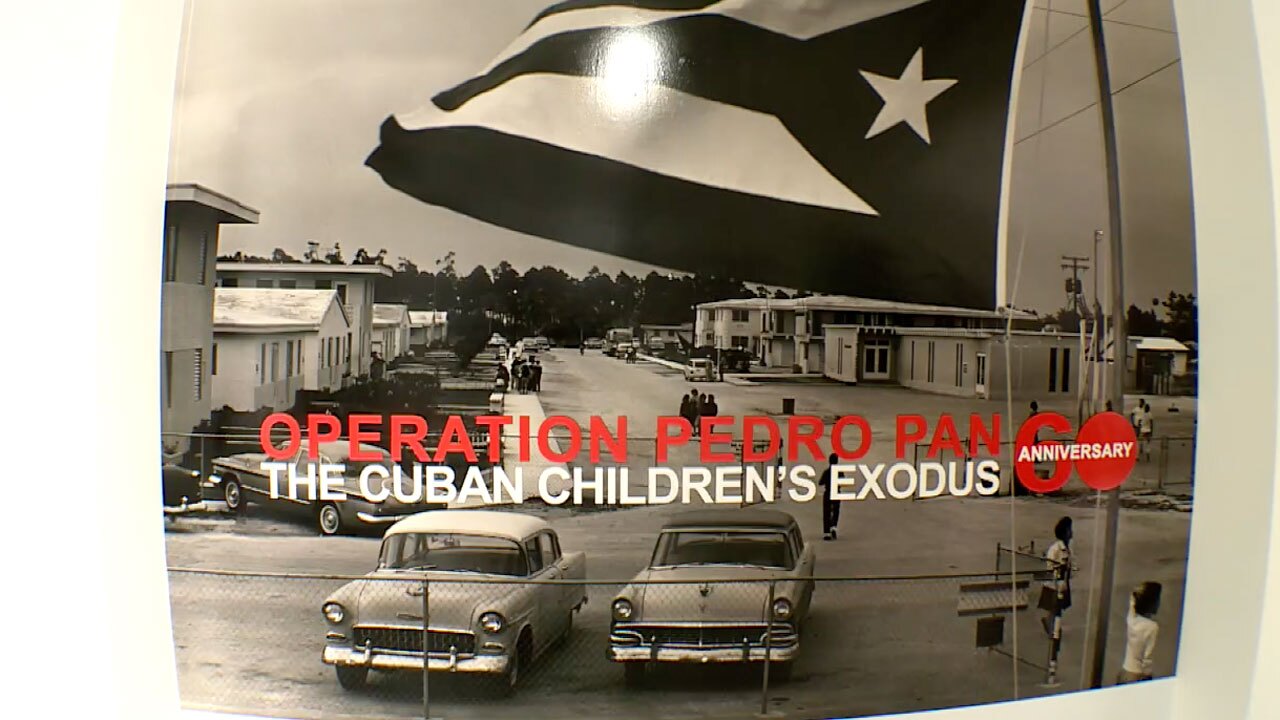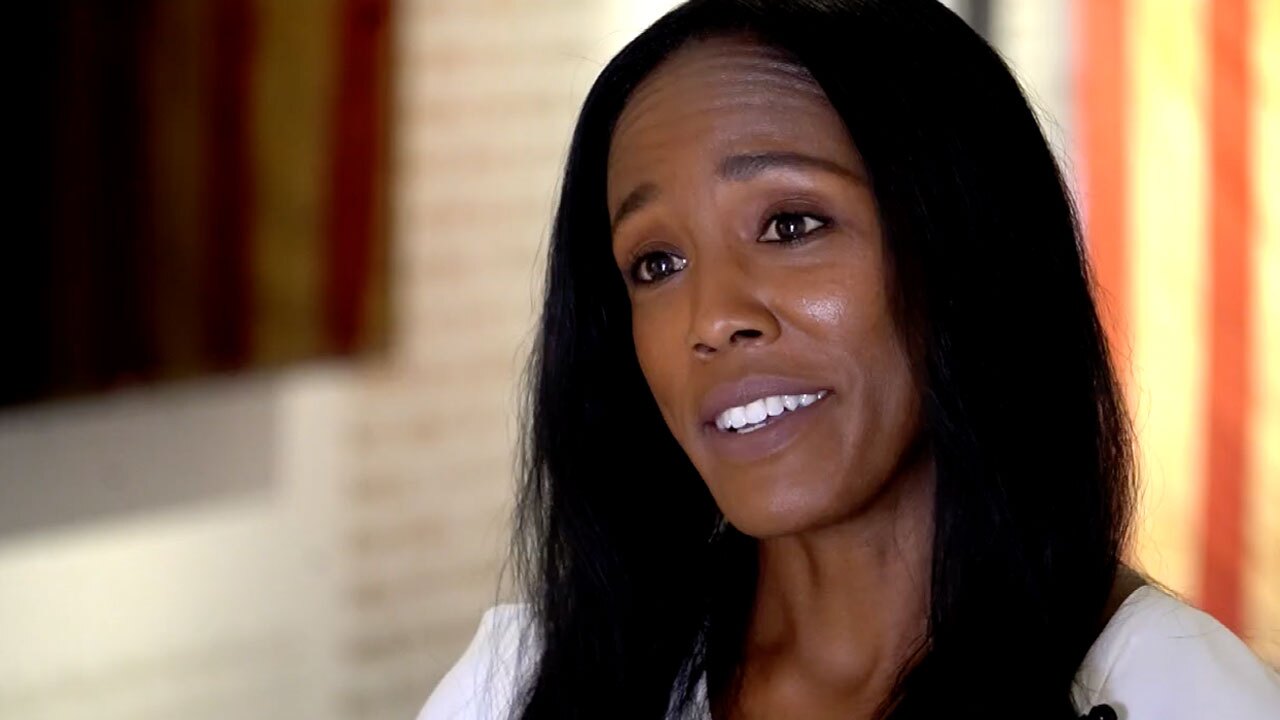MIAMI — It's been nearly two months since Cuba witnessed tens of thousands of residents pour onto the streets in a historical protest for freedom.
Shortly afterward, the island also saw a violent crackdown by the Cuban government to end the demonstrations.
Those protests started with what's called the "San Isidro movement," a group of artists, most of them Afro-Cubans, who stood up against the government's censorship of their works.
The voices of the Afro-Cuban community have never been louder.
Since the beginning of the San Isidro movement in Cuba that fueled the massive protests witnessed on the island in July, Afro-Cubans are sharing their realities.
Many residents in South Florida recall what it was like coming to the United States and confronting the hardships of being Black and Cuban.
"This is the first place that I lived when I arrived from Cuba," said Ricardo Gonzalez Zayas, the author of "Black Pedro Pan" as he points to a poster that shows the group home he first lived at in Florida City.
Gonzalez Zayas was 13 years old when he arrived in the United States as part of Operation Pedro Pan or Peter Pan.
"There were 14,000 children that left with a visa waiver," Gonzalez Zayas said.

From 1960 to 1962, Pedro Pan was the largest documented exodus of minor refugees in the Western Hemisphere.
"About half of them that left Cuba were picked up at the airport by an uncle or a relative or a friend. The other half went through a series of filters, camps, orphanages, foster homes, reform schools, just places where they can put them," Gonzalez Zayas said.
His parents, like thousands of others in Cuba, feared for their children's lives under the communist rule of revolutionary Fidel Castro.
"What I've always wondered about was what made my parents send me? Because at the time it was known Black people were not respected in this country, so I'm an only child and my parents were the center of my life. And I was the center of their life," Gonzalez Zayas added. "Hopelessness I guess."
He said he was among a very small number of Black children in the operation because, at the time, Castro had promised Blacks equality in Cuba prior to Castro's takeover. Black civil rights groups had made significant progress.
"(Castro) takes credit for all this progress made by Black Cubans, and in 1962 declared racism over in Cuba and then disbanded these Black civil rights movements," said John Suarez, executive director at the Center for a Free Cuba.

Suarez said this is the reason why Black Cubans did not flee the island in the numbers white Cubans did. That included fear of how they would be treated in the United States.
"'No Blacks, No Dogs, No Cubans,' posted in an apartment building, and I felt fortunate that I was not a dog, or else I would have completed that despised trifecta," read Suarez.
Gonzalez Zayas wrote those words in his book "Black Pedro Pan," recalling what is like for the Black Cubans in South Florida.
"The few that left usually ended up in New York City because Miami was then the Jim Crow south," Gonzalez Zayas said.
Fast forward to 2021, historical protests that erupted on the island were sparked by Afro-Cubans.
"I identify as Afro-Cuban American," said Maricarmen Hernandez.
Even living in Miami, the city with the largest concentrated number of Cubans, Hernandez has struggled with her identity.

"When they ask me if I've ever been discriminated against, I get discriminated every day three times -- being Black, being a woman, and being Hispanic or being Cuban," Hernandez said.
And being Cuban and Black is no easier in Cuba.
"Limited statistics available suggest that Afro-Cubans live in the most neglected parts of Cuba's urban areas, especially in Havana. Of the country's large prison population, the majority are estimated to be Afro-Cubans," according to an international advocacy organization called Minority Rights Group.
"We try to uplift the folks that are over in Cuba, the Afro-Cubans because they are the ones that can tell their story," said Roni Bennett, executive director of South Florida People of Color.
Bennett said the protests in Cuba started a conversation about learning the truth.
This came after the "Black Lives Matter" organization missed the demands for liberty from Cubans and released a statement urging the United States to lift its embargo saying, "Cuba has historically demonstrated solidarity with oppressed peoples of African descent."

The last six decades show otherwise.
Afro-Cubans have primarily represented the dissident movement in Cuba for the last 20 years.
"These individuals, especially Black Cubans, are being targeted by that regime because the regime's view is you're supposed to be grateful because we ended racism in 1959, so if you have anything to complain about, they punish you doubly," Suarez said.
Gonzalez Zayas said he doesn't know the Cuba of today.
"I didn't grow up in Cuba, so I don't really understand how you can live in a system where you can't speak your mind," he said.
But seeing Cubans rise against the regime makes him feel hopeful. He's grateful every day that his parents' despair led them to make the best decision they ever could for him.
"I wouldn't change my life in any way. I was very fortunate to leave," added Gonzalez Zayas.
Gonzalez Zayas will be sharing more about his life and book during a virtual discussion on Oct. 14 from 7 p.m. to 9 p.m.
Click here to learn more and register for the event.





